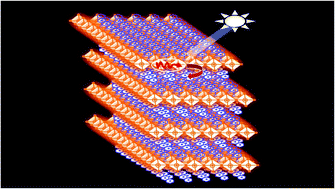Mechanism of ultrafast energy transfer between the organic–inorganic layers in multiple-ring aromatic spacers for 2D perovskites†
Abstract
Lead halide based perovskite semiconductors self-assemble with distinct organic cations in natural multi-quantum-well structures. The emerging electronic properties of these two-dimensional (2D) materials can be controlled by the combination of the halide content and choice of chromophore in the organic layer. Understanding the photophysics of the perovskite semiconductor materials is critical for the optimization of stable and efficient optoelectronic devices. We use femtosecond transient absorption spectroscopy (fs-TAS) to study the mechanism of energy transfer between the organic and inorganic layers in a series of three lead-based mixed-halide perovskites such as benzylammonium (BA), 1-naphthylmethylammonium (NMA), and 1-pyrenemethylammonium (PMA) cations in 2D-lead-based perovskite thin films under similar experimental conditions. After optical excitation of the 2D-confined exciton in the lead halide layer, ultrafast energy transfer is observed to organic singlet and triplet states of the incorporated chromophores. This is explained by an effective Dexter energy transfer, which operates via a correlated electron exchange between the donating 2D-confined exciton and the accepting chromophore under spin conservation.



 Please wait while we load your content...
Please wait while we load your content...